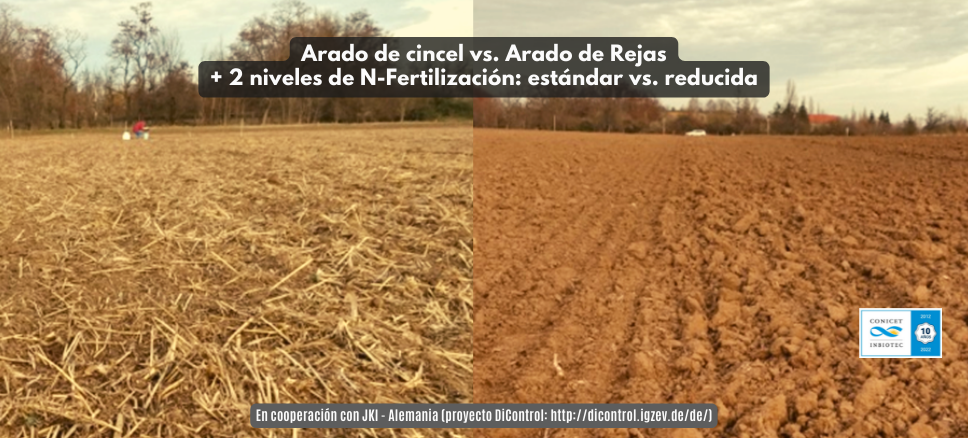Frontiers in Soil Science, 31 March 2022, 2022
Abstract
Application of agrochemicals and mechanization enabled increasing agricultural productivity yet caused various environmental and soil health-related problems. Agricultural practices affect soil microorganisms, which are the key players of many ecosystem processes. However, less is known about whether this effect differs between time points. Therefore, soil was sampled in winter (without crop) and in summer (in the presence of maize) from a long-term field experiment (LTE) in Bernburg (Germany) managed either under cultivator tillage (CT) or moldboard plow (MP) in combination with either intensive nitrogen (N)-fertilization and pesticides (Int) or extensive reduced N-fertilization without fungicides (Ext), respectively. High-throughput sequencing of 16S rRNA gene and fungal ITS2 amplicons showed that changes in the microbial community composition were correlated to differences in soil chemical properties caused by tillage practice. Microbial communities of soils sampled in winter differed only depending on the tillage practice while, in summer, also a strong effect of the fertilization intensity was observed. A small proportion of microbial taxa was shared between soils from the two sampling times, suggesting the existence of a stable core microbiota at the LTE. In general, taxa associated with organic matter decomposition (such as Actinobacteria, Bacteroidetes, Rhizopus, and Exophiala) had a higher relative abundance under CT. Among the taxa with significant changes in relative abundances due to different long-term agricultural practices were putative pathogenic (e.g., Gibellulopsis and Gibberella) and beneficial microbial genera (e.g., Chitinophagaceae, Ferruginibacter, and Minimedusa). In summary, this study suggests that the effects of long-term agricultural management practices on the soil microbiota are influenced by the soil sampling time, and this needs to be kept in mind in future studies for the interpretation of field data.
Keywords
Practice, fertilization intensity, high-throughput amplicon sequencing, 16S rRNA gene, fungal ITS2 region

